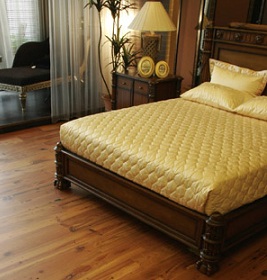
As traditional building materials are becoming increasingly expensive, homeowners have opted for new kinds of building materials that have a more reliable supply and can perform at the same level, if not actually exceed, the more traditional material. This new breed of products, called engineered building material, regaining popularity with consumers everywhere. Engineered building materials are designed to be more durable and have some features that are not found in its conventional counterpart.
Supplying Your Building With Cost-Effective, Durable, and Visually-Pleasing Materials The most popular engineered building materials are engineered wood flooring and engineered sidings. Engineered flooring comes in two main forms: engineered hardwood flooring and engineered bamboo flooring. These options are becoming more and more popular as homeowners are looking for more affordable and durable options to get the look and feel of hardwood floors, without having to settle for vinyl flooring or laminate.
A Closer Look at Engineered Building Materials Engineered flooring building materials are constructed from a natural material, such as hardwood, in a small amount. Other materials such as layers of high-density fiberboard then reinforce them in order to strengthen it. The introduction of these other components in the construction of engineered flooring materials not only strengthens it, it also allows for a cost-effective construction of your home. The lesser use of hardwood also makes it an innovative use of natural resources. This resourcefulness lends the idea of engineered flooring well to the green flooring alternatives. Engineered Materials: A Durable Alternative to Traditional Building Materials A question often asked about engineered flooring materials is its durability. Engineered flooring materials undergo extensive and rigorous testing before being made available to consumers. Engineered building materials are made to perform just as well, if not better, than most building materials.
For example, engineered hardwood flooring is slightly more resistant to moisture than wood flooring, thus enabling homeowners to have beautiful wood flooring in areas of their home where traditional wood flooring just wouldn’t do such as basement floors. Their composition also allows them to naturally expand and contract during humidity and temperature fluctuations, something that solid wood can do up to a point, but tends to warp and cup with extremes.
Engineered Flooring Advantages With regard to engineered bamboo flooring, there is an added layer of hardwood to improve strength and durability. The same principles surrounding engineered wood flooring still apply, but with a thin veneer layer of bamboo at the outermost layer. This will create a somewhat different look for homeowners who like the look of bamboo, but with all of the benefits of bamboo, hardwood, and engineered materials combined.
Making the Choice for Engineered Flooring Materials If you find yourself in the position of wanting a natural flooring material but are unsure of whether the humidity of the area will cause problems, then engineered flooring may be a suitable middle ground. Its installation is usually quite simple, and many manufacturers allow for a floating engineered flooring installation. This means the planks lock together and tension keeps the floor in place rather than glue or nails.
Using engineered flooring building supplies have definite advantages, such as better performance for costs, reduced use of natural resources, and less waste on job sites. All in all, engineered materials are steadily gaining acceptance among builders and homeowners alike as a reliable and durable building material that is also aesthetically pleasing.





